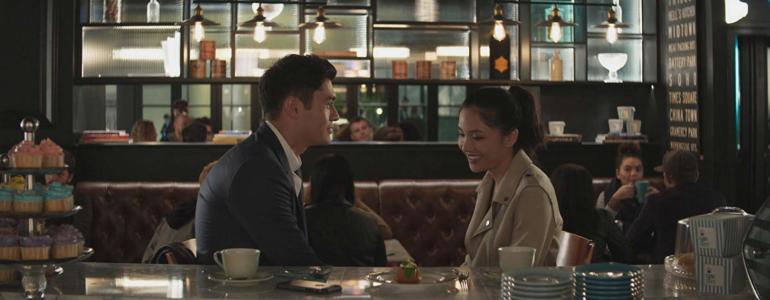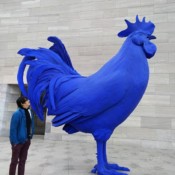If you haven’t seen the movie or read Kevin Kwan’s novel of the same name, I apologize for this spoiler: true love prevails in “Crazy Rich Asians”. In spite of all the challenges — whether it be familial, cultural, language, wealth and even jealous exes — Rachel Chu eventually ends up with Nick Young.
As a romantic comedy, “Crazy Rich Asians” is just about perfect. You know the protagonist will eventually end up with the person she truly loves, even as villains in the form of Nick Young’s relatives (especially Michelle Yeoh’s fierce take on the calculating matriarch of the Young family) and the Singaporean elite try to thwart their relationship.
Ahmad Coo is a producer and copy editor for the Global Business show on CGTN America. His analysis represents his views alone.
Unfortunately, “Crazy Rich Asians” isn’t seen as just an excellent rom-com. It’s been proclaimed by critics as a trailblazing movie, some even compared it to what “Black Panther” was for African Americans — a film that isn’t mired in stereotypes and tired tropes.
Filmed almost entirely in Asia and with a completely Asian and Asian-American cast, everyone expected it to reverse decades of Hollywood’s casual racism and tokenism against Asians in film. Finally, we’d be presented as fully realized characters.
A lot of us — myself included — were hopeful the film would mean that our movie roles would no longer be confined to the mysterious, submissive Asian woman clued in to secret Eastern styles of lovemaking. No longer would we be the butt of movie jokes for being the nerdy, un-athletic, asexual Asian male with a funny accent who’s great at math but just about bad at everything. I would finally be rid of Long Duck Dong from “Sixteen Candles” and that tragic working woman Suzie Wong.
But alas, “Crazy Rich Asians” was a let-down for many of us. Some were even offended by it. Just a week after its release, in addition to praise from around the world, there were many takedowns of the film. Some criticized leading man Henry Golding for not being Chinese. The actor is half-white, half-Iban (an indigenous group in Malaysia).

Nick Young (Henry Golding) and Rachel Chu (Constance Wu) Credit: Warner Bros
Others decried the marginalization of other Asians: Filipinas appear in the movie as maids, while Indians were confined to play security guards. To many, “Crazy Rich Asians” was a tremendous disappointment, at least in terms of trying to improve representation of minorities in Hollywood.
Others complained that the film perpetuated Singaporean Chinese dominance in mainstream media and pop culture, and thus was just another example of one ethnic group erasing and disregarding the experiences of others who also live in Singapore. The island state is made up mostly of Chinese, Malays, and Indians — yet the latter two were basically invisible in the movie.
However, while many of the broadsides against “Crazy Rich Asians” were valid, most missed the overall purpose of the movie. Yes it’s couched in the conventions of the romantic comedy, but really, it’s a satire that skewers Asia’s richest families and makes fun of their ridiculous lifestyles.
(My editor is making me add here that the film also offers insight into the very real Asian tiger-parenting technique that often makes children feel that they will “never be good enough” — a prominent line in the film. Sure, yeah that’s probably true too.)
If you read the trilogy of novels by Kevin Kwan (“Crazy Rich Asians”, “China Rich Girlfriend”, and “Rich People Problems”), you’ll realize that they’re more scathing (and hilarious) indictments of the wealthiest of the wealthy than they are stories about love.
There are definite “feels” to be had when love ultimately prevails in the novels, but Kwan’s works and the movie are at their best when slicing and dicing the classism of the 1 percent. It’s fascinating to look into the world of the elite because ultimately, it’s a perverse and warped one in terms of values. They say absolute power corrupts, but I believe money is a more potent destructive force.
Some critics have said that the outlandish behavior, lifestyles and spending habits shown by the wealthy scions and spoiled rich kids in the movie were heavily exaggerated. Unfortunately, they’re wrong.
I’ve lived in Asia for most of my life and I hate to admit that some of the bad behavior exhibited by the brats in “Crazy Rich Asians” isn’t far from what I’ve witnessed. There are some scenes in the movie that reminded me of some of my closest friends’ outsized wealth. These people do exist and some of the behavior they exhibit in real life are just as outrageous, if not more so than the characters’ hi-jinxes in the movie.

Where’s the party at brah? Chris Pang, Jimmy O. Yang, Ronny Chieng, Remy Hii, and Henry Golding in Crazy Rich Asians Credit: Warner Bros
I saw “Crazy Rich Asians” two weeks ago, but I’ve let the film percolate in my head trying to glean some deeper message before I came up with this review. But beyond being a great rom-com and a critique of the rich, the film has left a bad taste in my mouth.
Maybe that’s because from the high fashion, to the opulent jewelry, to the treatment of those in the service industry and the less fortunate, “Crazy Rich Asians” is a very real portrait of the out-of-control consumerism and stunning callousness of the rich in Asia.
And that might just be Kwan’s point.
 CGTN America
CGTN America
 Rachel Chu (Constance Wu) in Crazy Rich Asians. Credit: Warner Bros.
Rachel Chu (Constance Wu) in Crazy Rich Asians. Credit: Warner Bros.

